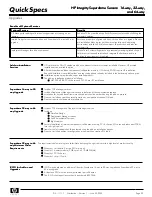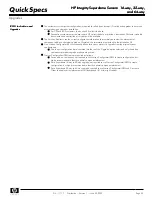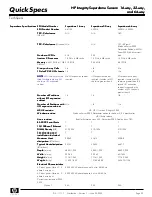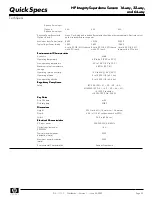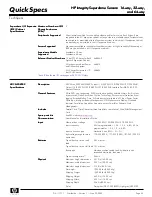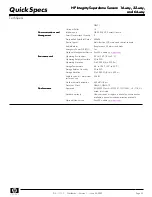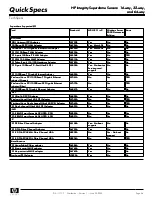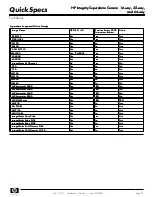
16
16
16
16
Removable media device controller should be in slot 8 of the I/O chassis.
Removable media device controller should be in slot 8 of the I/O chassis.
Removable media device controller should be in slot 8 of the I/O chassis.
Removable media device controller should be in slot 8 of the I/O chassis.
17
17
17
17
Core I/O card must be in slot 0 of the I/O chassis.
Core I/O card must be in slot 0 of the I/O chassis.
Core I/O card must be in slot 0 of the I/O chassis.
Core I/O card must be in slot 0 of the I/O chassis.
18
18
18
18
Boot device controller should be in slot 1 of the I/O chassis
Boot device controller should be in slot 1 of the I/O chassis
Boot device controller should be in slot 1 of the I/O chassis
Boot device controller should be in slot 1 of the I/O chassis
19
19
19
19
PCI-X high bandwidth I/O cards should be in the high bandwidth slots in the I/O chassis
PCI-X high bandwidth I/O cards should be in the high bandwidth slots in the I/O chassis
PCI-X high bandwidth I/O cards should be in the high bandwidth slots in the I/O chassis
PCI-X high bandwidth I/O cards should be in the high bandwidth slots in the I/O chassis
20
20
20
20
Every I/O card in an I/O chassis must be assigned to a valid physical location.
Every I/O card in an I/O chassis must be assigned to a valid physical location.
Every I/O card in an I/O chassis must be assigned to a valid physical location.
Every I/O card in an I/O chassis must be assigned to a valid physical location.
21
21
21
21
Every I/O chassis in a Superdome complex must be assigned to a valid physical location
Every I/O chassis in a Superdome complex must be assigned to a valid physical location
Every I/O chassis in a Superdome complex must be assigned to a valid physical location
Every I/O chassis in a Superdome complex must be assigned to a valid physical location
Performance
Performance
Performance
Performance
22
22
22
22
The amount of memory on a cell should be evenly divisible by 4 GB if using 512-MB DIMMs
The amount of memory on a cell should be evenly divisible by 4 GB if using 512-MB DIMMs
The amount of memory on a cell should be evenly divisible by 4 GB if using 512-MB DIMMs
The amount of memory on a cell should be evenly divisible by 4 GB if using 512-MB DIMMs
or 8 GB if using 1-GB DIMMs, i.e. 8, 16 or 32 DIMMs. The cell has four memory subsystems
or 8 GB if using 1-GB DIMMs, i.e. 8, 16 or 32 DIMMs. The cell has four memory subsystems
or 8 GB if using 1-GB DIMMs, i.e. 8, 16 or 32 DIMMs. The cell has four memory subsystems
or 8 GB if using 1-GB DIMMs, i.e. 8, 16 or 32 DIMMs. The cell has four memory subsystems
and each subsystem should have an echelon (2 DIMMs) populated. The loading order of the
and each subsystem should have an echelon (2 DIMMs) populated. The loading order of the
and each subsystem should have an echelon (2 DIMMs) populated. The loading order of the
and each subsystem should have an echelon (2 DIMMs) populated. The loading order of the
DIMMs alternates among the four subsystems. This rule provides maximum memory
DIMMs alternates among the four subsystems. This rule provides maximum memory
DIMMs alternates among the four subsystems. This rule provides maximum memory
DIMMs alternates among the four subsystems. This rule provides maximum memory
bandwidth on the cell, by equally populating all four memory subsystems.
bandwidth on the cell, by equally populating all four memory subsystems.
bandwidth on the cell, by equally populating all four memory subsystems.
bandwidth on the cell, by equally populating all four memory subsystems.
23
23
23
23
All cells in a partition should have the same number of processors.
All cells in a partition should have the same number of processors.
All cells in a partition should have the same number of processors.
All cells in a partition should have the same number of processors.
24
24
24
24
The number of active CPUs per cell should be balanced across the partition, however minor
The number of active CPUs per cell should be balanced across the partition, however minor
The number of active CPUs per cell should be balanced across the partition, however minor
The number of active CPUs per cell should be balanced across the partition, however minor
differences are OK. (Example: 4 active CPUs on one cell and three active CPUs on the
differences are OK. (Example: 4 active CPUs on one cell and three active CPUs on the
differences are OK. (Example: 4 active CPUs on one cell and three active CPUs on the
differences are OK. (Example: 4 active CPUs on one cell and three active CPUs on the
second cell)
second cell)
second cell)
second cell)
25
25
25
25
If memory is going to be configured as fully interleaved, all cells in a partition should have
If memory is going to be configured as fully interleaved, all cells in a partition should have
If memory is going to be configured as fully interleaved, all cells in a partition should have
If memory is going to be configured as fully interleaved, all cells in a partition should have
the same amount of memory (symmetric memory loading). Asymmetrically distributed memory
the same amount of memory (symmetric memory loading). Asymmetrically distributed memory
the same amount of memory (symmetric memory loading). Asymmetrically distributed memory
the same amount of memory (symmetric memory loading). Asymmetrically distributed memory
affects the interleaving of cache lines across the cells. Asymmetrically distributed memory
affects the interleaving of cache lines across the cells. Asymmetrically distributed memory
affects the interleaving of cache lines across the cells. Asymmetrically distributed memory
affects the interleaving of cache lines across the cells. Asymmetrically distributed memory
can create memory regions that are non optimally interleaved. Applications whose memory
can create memory regions that are non optimally interleaved. Applications whose memory
can create memory regions that are non optimally interleaved. Applications whose memory
can create memory regions that are non optimally interleaved. Applications whose memory
pages land in memory interleaved across just one cell can see up to 16 times less bandwidth
pages land in memory interleaved across just one cell can see up to 16 times less bandwidth
pages land in memory interleaved across just one cell can see up to 16 times less bandwidth
pages land in memory interleaved across just one cell can see up to 16 times less bandwidth
than ones whose pages are interleaved across all cells.
than ones whose pages are interleaved across all cells.
than ones whose pages are interleaved across all cells.
than ones whose pages are interleaved across all cells.
26
26
26
26
If a partition contains 4 or fewer cells, all the cells should be linked to the same crossbar
If a partition contains 4 or fewer cells, all the cells should be linked to the same crossbar
If a partition contains 4 or fewer cells, all the cells should be linked to the same crossbar
If a partition contains 4 or fewer cells, all the cells should be linked to the same crossbar
(quad) in order to eliminate bottlenecks and the sharing of crossbar bandwidth with other
(quad) in order to eliminate bottlenecks and the sharing of crossbar bandwidth with other
(quad) in order to eliminate bottlenecks and the sharing of crossbar bandwidth with other
(quad) in order to eliminate bottlenecks and the sharing of crossbar bandwidth with other
partitions. In each Superdome cabinet, slots 0, 1, 2 and 3 link to the same crossbar and
partitions. In each Superdome cabinet, slots 0, 1, 2 and 3 link to the same crossbar and
partitions. In each Superdome cabinet, slots 0, 1, 2 and 3 link to the same crossbar and
partitions. In each Superdome cabinet, slots 0, 1, 2 and 3 link to the same crossbar and
slots 4, 5, 6 and 7 link to the same crossbar.
slots 4, 5, 6 and 7 link to the same crossbar.
slots 4, 5, 6 and 7 link to the same crossbar.
slots 4, 5, 6 and 7 link to the same crossbar.
27
27
27
27
A Core I/O card should not be selected as the main network interface to a partition. A Core
A Core I/O card should not be selected as the main network interface to a partition. A Core
A Core I/O card should not be selected as the main network interface to a partition. A Core
A Core I/O card should not be selected as the main network interface to a partition. A Core
I/O card is a PCI X 1X card that possibly produces lower performance than a comparable
I/O card is a PCI X 1X card that possibly produces lower performance than a comparable
I/O card is a PCI X 1X card that possibly produces lower performance than a comparable
I/O card is a PCI X 1X card that possibly produces lower performance than a comparable
PCI X 2X card.
PCI X 2X card.
PCI X 2X card.
PCI X 2X card.
28
28
28
28
The number of cells in a partition should be a power of two, i.e., 2, 4, 8, or 16.
The number of cells in a partition should be a power of two, i.e., 2, 4, 8, or 16.
The number of cells in a partition should be a power of two, i.e., 2, 4, 8, or 16.
The number of cells in a partition should be a power of two, i.e., 2, 4, 8, or 16.
Optimal interleaving of memory across cells requires that the number of cells be a power of
Optimal interleaving of memory across cells requires that the number of cells be a power of
Optimal interleaving of memory across cells requires that the number of cells be a power of
Optimal interleaving of memory across cells requires that the number of cells be a power of
two. Building a partition that does not meet this requirement can create memory regions that
two. Building a partition that does not meet this requirement can create memory regions that
two. Building a partition that does not meet this requirement can create memory regions that
two. Building a partition that does not meet this requirement can create memory regions that
are non optimally interleaved. Applications whose memory pages land in the memory that is
are non optimally interleaved. Applications whose memory pages land in the memory that is
are non optimally interleaved. Applications whose memory pages land in the memory that is
are non optimally interleaved. Applications whose memory pages land in the memory that is
interleaved across just one cell can experience up to 16 times less bandwidth than pages
interleaved across just one cell can experience up to 16 times less bandwidth than pages
interleaved across just one cell can experience up to 16 times less bandwidth than pages
interleaved across just one cell can experience up to 16 times less bandwidth than pages
which are interleaved across all 16 cells.
which are interleaved across all 16 cells.
which are interleaved across all 16 cells.
which are interleaved across all 16 cells.
29
29
29
29
Before consolidating partitions in a Superdome 32-way or 64-way system, the following link
Before consolidating partitions in a Superdome 32-way or 64-way system, the following link
Before consolidating partitions in a Superdome 32-way or 64-way system, the following link
Before consolidating partitions in a Superdome 32-way or 64-way system, the following link
load calculation should be performed for each link between crossbars in the proposed
load calculation should be performed for each link between crossbars in the proposed
load calculation should be performed for each link between crossbars in the proposed
load calculation should be performed for each link between crossbars in the proposed
partition.
partition.
partition.
partition.
Links loads less then 1 are best. As the link load begins to approach 2 performance
Links loads less then 1 are best. As the link load begins to approach 2 performance
Links loads less then 1 are best. As the link load begins to approach 2 performance
Links loads less then 1 are best. As the link load begins to approach 2 performance
bottlenecks may occur.
bottlenecks may occur.
bottlenecks may occur.
bottlenecks may occur.
For crossbars X and Y
For crossbars X and Y
For crossbars X and Y
For crossbars X and Y
Link Load = Qx * Qy / Qt / L, where
Link Load = Qx * Qy / Qt / L, where
Link Load = Qx * Qy / Qt / L, where
Link Load = Qx * Qy / Qt / L, where
- Qx is the number of cells connected to crossbar X (quad)
- Qx is the number of cells connected to crossbar X (quad)
- Qx is the number of cells connected to crossbar X (quad)
- Qx is the number of cells connected to crossbar X (quad)
- Qy is the number of cells connected to crossbar Y (quad)
- Qy is the number of cells connected to crossbar Y (quad)
- Qy is the number of cells connected to crossbar Y (quad)
- Qy is the number of cells connected to crossbar Y (quad)
- Qt is the total number of cells in the partition
- Qt is the total number of cells in the partition
- Qt is the total number of cells in the partition
- Qt is the total number of cells in the partition
- L is the number of links between crossbar X and Y (2 for Superdome 32-way systems and 1
- L is the number of links between crossbar X and Y (2 for Superdome 32-way systems and 1
- L is the number of links between crossbar X and Y (2 for Superdome 32-way systems and 1
- L is the number of links between crossbar X and Y (2 for Superdome 32-way systems and 1
for Superdome 64-way systems)
for Superdome 64-way systems)
for Superdome 64-way systems)
for Superdome 64-way systems)
30
30
30
30
Maximum performance for optimal configurations (power of two cells, uniform memory
Maximum performance for optimal configurations (power of two cells, uniform memory
Maximum performance for optimal configurations (power of two cells, uniform memory
Maximum performance for optimal configurations (power of two cells, uniform memory
across cells, power of two DIMM ranks per cell)
across cells, power of two DIMM ranks per cell)
across cells, power of two DIMM ranks per cell)
across cells, power of two DIMM ranks per cell)
31
31
31
31
(If rule #30 cannot be met, rule #31 is recommended) Non-power of two cells, but still
(If rule #30 cannot be met, rule #31 is recommended) Non-power of two cells, but still
(If rule #30 cannot be met, rule #31 is recommended) Non-power of two cells, but still
(If rule #30 cannot be met, rule #31 is recommended) Non-power of two cells, but still
uniform memory across cells, power of two DIMM ranks per cell, uniform type of DIMM.
uniform memory across cells, power of two DIMM ranks per cell, uniform type of DIMM.
uniform memory across cells, power of two DIMM ranks per cell, uniform type of DIMM.
uniform memory across cells, power of two DIMM ranks per cell, uniform type of DIMM.
32
32
32
32
(If rule #30 or #31 cannot be met, rule #32 is recommended) Same amount of memory in
(If rule #30 or #31 cannot be met, rule #32 is recommended) Same amount of memory in
(If rule #30 or #31 cannot be met, rule #32 is recommended) Same amount of memory in
(If rule #30 or #31 cannot be met, rule #32 is recommended) Same amount of memory in
each cell, but possibly different memory types in each cell (for instance, a two cell
each cell, but possibly different memory types in each cell (for instance, a two cell
each cell, but possibly different memory types in each cell (for instance, a two cell
each cell, but possibly different memory types in each cell (for instance, a two cell
configuration with 8 512MB DIMMs in one cell, and 4 1GB DIMMs in the other). Differences
configuration with 8 512MB DIMMs in one cell, and 4 1GB DIMMs in the other). Differences
configuration with 8 512MB DIMMs in one cell, and 4 1GB DIMMs in the other). Differences
configuration with 8 512MB DIMMs in one cell, and 4 1GB DIMMs in the other). Differences
in memory across different cells within the same partition should be minimal for the best
in memory across different cells within the same partition should be minimal for the best
in memory across different cells within the same partition should be minimal for the best
in memory across different cells within the same partition should be minimal for the best
performance.
performance.
performance.
performance.
QuickSpecs
HP Integrity Superdome Servers: 16-way, 32-way,
HP Integrity Superdome Servers: 16-way, 32-way,
HP Integrity Superdome Servers: 16-way, 32-way,
HP Integrity Superdome Servers: 16-way, 32-way,
and 64-way
and 64-way
and 64-way
and 64-way
Configuration
DA - 11717 Worldwide — Version 1 — June 30, 2003
Page 22






















